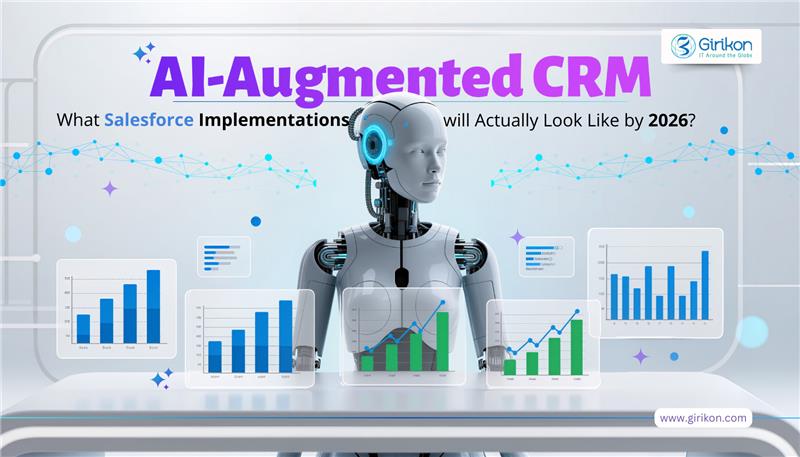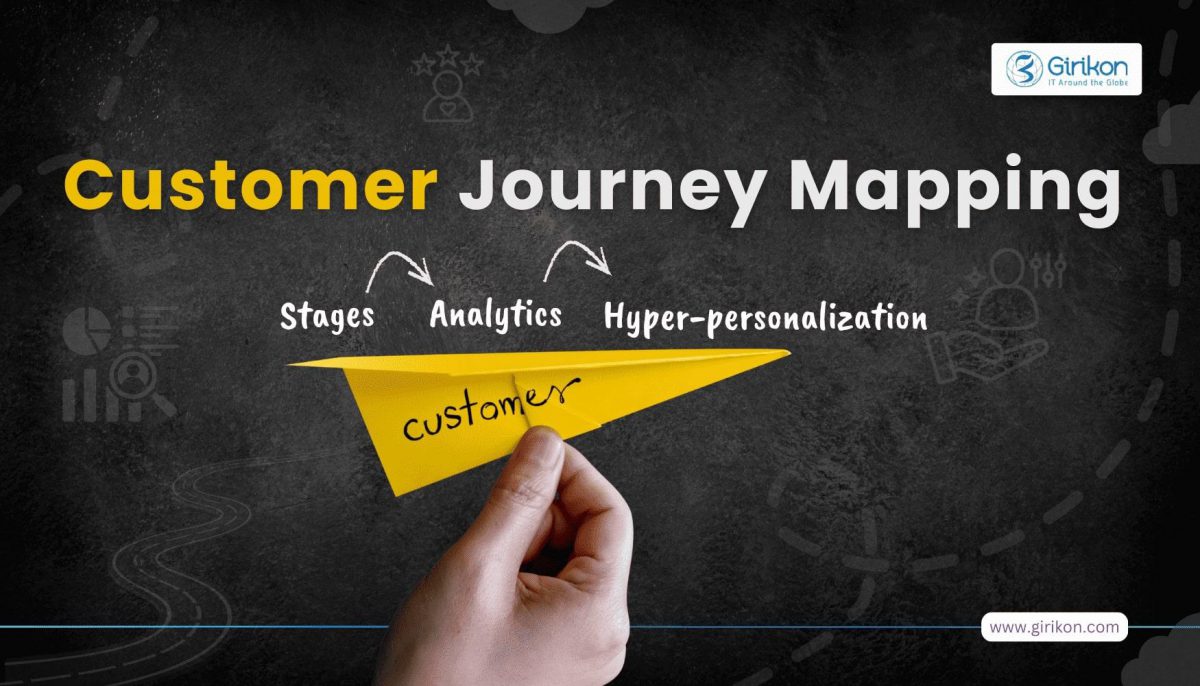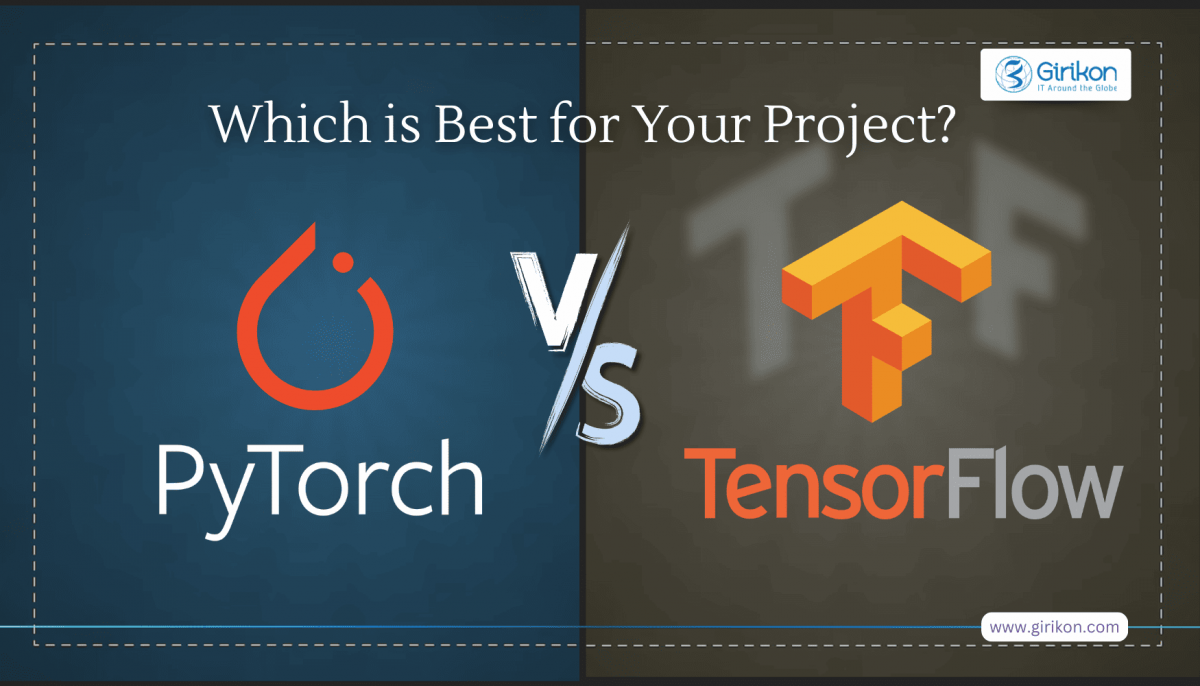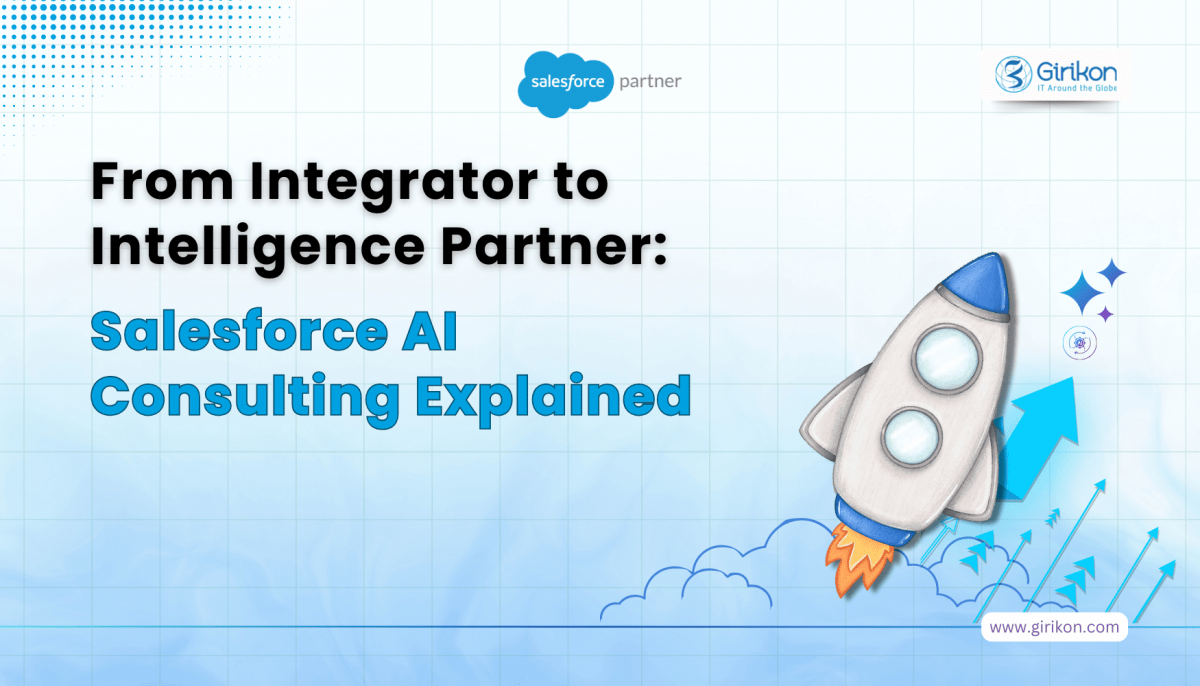Our Blogs
Insights derived from data are critical for businesses today. They facilitate informed decision-making and enable them to adapt to shifting market circumstances.
There are many solutions available today for such tasks such as solutions for data mining that reveal patterns, solutions for data visualization that reveal the bigger picture, and solutions for predictive analytics that forecast trends.
In this article, we'll look at one such solution – Salesforce Einstein Discovery, which helps businesses maximize the potential of their data and create sustainable success by helping them find new possibilities, solve problems, and make smarter decisions.
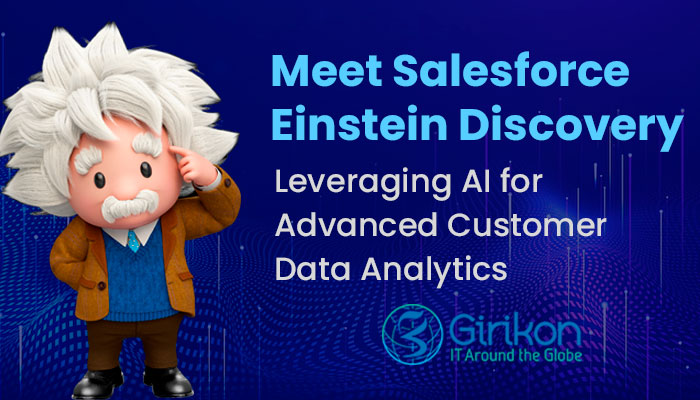
What is Salesforce Einstein Discovery?
Salesforce Einstein Discovery is an advanced analytics solution that helps businesses leverage cutting-edge technologies like statistical modeling and machine learning to extract more value from the data they generate.
This platform allows you to forecast future events and even receive suggestions for how to make things better. It connects seamlessly with Salesforce making data analysis and predictions a breeze.
Salesforce Einstein Discovery leverages predictive models to project future events and identifies the critical variables that affect results. This allows businesses to determine where their resources should be assigned for them to be most effective.
Einstein Discovery provides practical recommendations to increase the likelihood of achieving desired outcomes, including determining the best sales or marketing plan for a particular customer. It directs users toward business decisions that have a higher likelihood of delivering results.
Salesforce Einstein Discovery Features
Automatic Data Analysis
Einstein Discovery automatically performs analyses and detects patterns and correlations that would be very difficult for humans to detect. In addition to saving time, this automatic analysis produces more accurate insights and reduces the likelihood of errors that would normally arise if humans were to complete the task.
Employees and business leaders can draw conclusions more quickly by leveraging its insightful recommendations, which also increase confidence in the generated predictions, suggested courses of action based on predictions, and suggestions for improved business outcomes.
Interactive Visualizations
A diverse set of AI capabilities and visualization options empowers users to spot trends, uncover new facts hidden in their data, and create a collection of visualizations that support evidence-based decision-making.
Although creating these dashboards may appear to be quite a task compared to creating ordinary reports, Einstein Discovery makes them more accessible and configurable.
Users can easily interact with the data presented by Einstein Discovery making complex information easier to comprehend. Users can explore the visualizations, delve deeper into the reports to discover more detailed information and tailor the visuals to their own requirements.
Recommendations and Predictions
Einstein Discovery goes beyond conventional analysis by making recommendations and predictions based on existing facts. It employs predictive models, which are a type of regression or machine-learning analysis, to assess the likelihood of future events.
Once launched, a model can be used in a variety of Salesforce applications, including Lightning and Experience Cloud pages.
The predictions are also compatible with other programs such as CRM Analytics Data Prep and Flow Builder. Users can obtain forecasts using REST or Apex API calls. Predictions can be recorded straight to records, used as needed or even incorporated into CRM Analytics datasets.
User-friendly Interface
The tool's UI is meant to make it easy for people with minimum technical ability to navigate through it. This levels the playing field and enables more team members to interact with the data, fostering a data-driven culture within enterprises.
Integration with Other Salesforce Products
Native integration with other Salesforce products allows users to access advanced analytics capabilities within their existing Salesforce processes, hereby augmenting the capabilities of the solution.
For instance, sales reps can use insights to prioritize prospects and uncover upselling opportunities. Support teams can utilize Service Cloud to predict and address client issues before they arise.
Similarly, marketers can use Einstein Discovery's analytics to improve campaigns, better segment audiences, and customize customer interactions, resulting in better overall results for the organization.
Working with Salesforce Einstein Discovery
Einstein Analytics integration in a production environment requires additional Salesforce licenses. Once you join up on their website, you can have access to the Salesforce Developer Edition environment, which includes the Einstein Discovery module.
How does Salesforce Einstein Discovery work?
In Einstein Discovery, the data analysis process is divided into two stages:
- Preparing the data set – involves data import and processing.
- Creating the analysis – specifying what we're looking for and selecting the analysis parameters.
Preparing the data set
This includes all the data we want to use in the analysis.
To generate a data set, we can use existing Salesforce data. They can come from any single item, whether standard or created by us, or they can link data from many objects, such as business possibilities and the accounts and contacts they concern.
Importing data (possible sources)
With Einstein Discovery, you can connect and import data from external sources like:
- MySQL
- Hadoop
- Postgres
- SAP
- Oracle
- Microsoft SQL Server
- Netezza
- CVSV
Einstein Discovery automatically assesses the data's quality and indicates what errors may exist and how to fix them.
Examples of tool suggestions:
- Discovery identifies extremely rare values. Their limited number makes it harder to identify patterns between them and the rest of the data. The tool suggests double-checking values for accuracy, typos, and substitutions. It is also possible to remove the specified rows from the dataset.
- If the record includes a date and time, Einstein Discovery recommends that you determine whether the exact time is critical to our analysis or if it is best to discard it.
- If both columns have the same name, Einstein Discovery will suggest renaming either of them.
Errors in data
Einstein Discovery assigns one of three types – text, numeric, or date to the data. It determines how numbers change over time and in relation to the text data that corresponds to them. Before checking the data, ensure that the types have been correctly assigned. For example, if you import a product ID that just contains numbers, Einstein Discovery may mistake them for a number rather than text.
Einstein Discovery also allows you to:
- Include a column on numerical fields that shows the average, maximum, minimum or the outcome of simple mathematical operations.
- Check whether the value in date type fields is before, after, or equal to the selected, different date by adding or subtracting the indicated number of days.
- Include more columns from already established data sources.
- Sort the data based on the fields and values specified.
Creating the analysis
A Salesforce user can complete the analysis on the desired topic in a matter of minutes if they have a ready data source. You don't need to know statistical data models or technical programming.
Click "Create Story" after choosing the data source to begin creating it. After that, you will be directed to the settings page where you can choose whatever value to maximize or decrease.
Additionally, you can:
- Specify the fields from the data source that will be used to create the analysis. All fields are chosen by default.
- If the data source has date-type fields, you can choose a range to see how the data changes over time.
- Indicate the fields that you can modify. Einstein Discovery will convert the ones that have the most impact on the results.
- Modify the model's parameters to forecast potential future outcomes and select the desired statistical approach.
Once the appropriate criteria have been chosen, click "Create Story" once more. Einstein Discovery will start its work.
What is the outcome of the analysis?
- Einstein Discovery findings are displayed as short text tips and charts that relate to the specified parameter that we wish to look into.
- It generates a business history based on the advice it deems most significant, explaining what the parameter under test depends on and how we may affect its value.
- We can make changes to the history, such as removing or adding tips. We quickly export it as a presentation or Word document when we believe it is ready and addresses the questions that are important to us.
Additionally, we can also select the question for which we would want to see suggestions. We have the option to select:
- What happened?
- Why this happened?
- What changed with time?
- What is possible?
- How can I make this better?
Einstein discovery shows you how many fields affect the parameter. You can choose any combination of parameters and values to compare results.
For each result, you will get:
- A chart
- The key findings in text format
- Numerical information displaying the number of records, standard deviation, mean deviation, and value for the chosen parameter
Streamlining the analysis
Einstein Discovery assesses data quality further throughout processing and suggests ways to make it better. We can choose whether or not to use the analysis and improvement suggestions after reading them. If that's the case, Discovery will run another analysis.
Examples of improvements:
- Deleting duplicate columns from a dataset if many columns have identical data
- Deleting records whose values are significantly off from the average. These are severe, mostly nonexistent instances that could affect the standard deviation and mean results.
- Eliminating fields whose values are determined by the magnitude of the parameter under investigation, have the biggest influence on the tested parameter based on the first analysis, and we don't think there is any mathematical dependence between them.
The Difference Between Salesforce Einstein Discovery and Einstein Analytics?
Despite having different uses and strategies, Salesforce Einstein Analytics and Salesforce Einstein Discovery are both components of the Salesforce Einstein platform that leverage Einstein AI.
While Salesforce Einstein Discovery employs machine learning to uncover hidden patterns in your data and forecast future events, Salesforce Einstein Analytics is utilized for data exploration, visualization, and predictive analytics. Using emails and calendar activities, Einstein Activity Capture can be used as a data source for Einstein Discovery models.
It can be summed up as follows: While Einstein Discovery provides predictive insights by seeing patterns and trends, Einstein Activity Capture provides descriptive insights by recording actions and interactions.
All Salesforce apps now come with a new conversational AI assistant called Einstein Copilot that can respond to natural language questions and deliver accurate and reliable answers.
How can you get Einstein Discovery predictions in a CRM Analytics dataset?
- Make sure your CRM Analytics dataset contains all the information you need.
- Leverage your CRM Analytics dataset to enable Einstein Discovery to build and train a predictive model.
- Use Einstein Discovery to give predictions for your CRM Analytics dataset after your model has been trained.
- Connect Salesforce apps with the insights, discoveries, and recommendations produced by Einstein Discovery.
Summary
Salesforce Einstein Discovery is a great solution that leverages artificial intelligence and sophisticated statistical models for analyzing huge data sets. Girikon, a certified Salesforce consulting company, can help you set it up and optimize it. Our Salesforce consultants will integrate Einstein Discovery into your current workflows and train your staff, including those without any prior technical or statistical expertise, on how to utilize it to its fullest potential. Contact us today for a free consultation on Einstein Discovery.

 +1-480-241-8198
+1-480-241-8198 +44-7428758945
+44-7428758945 +61-1300-332-888
+61-1300-332-888 +91 9811400594
+91 9811400594